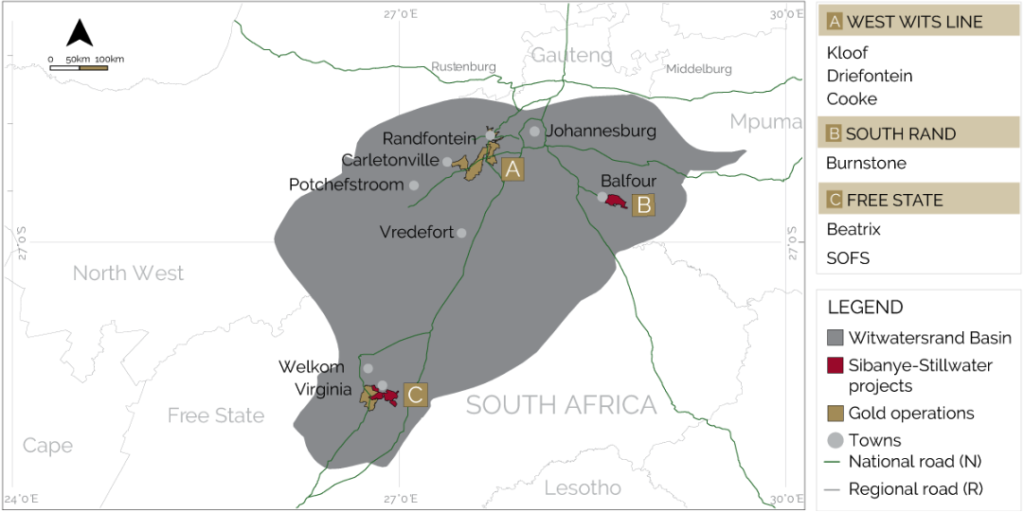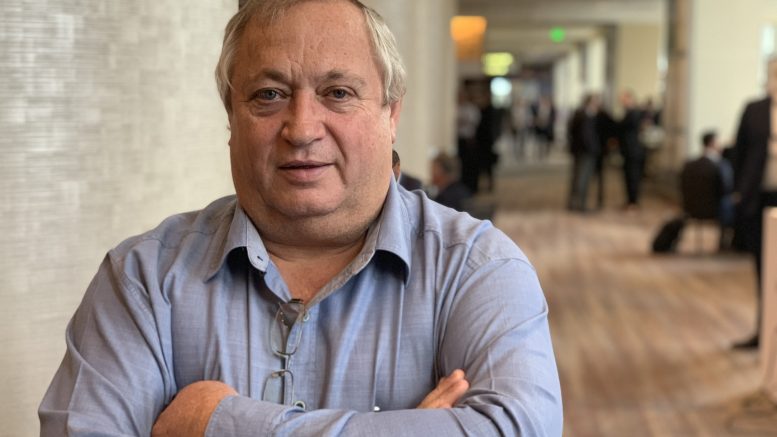South Africa’s Association of Mineworkers and Construction Union (Amcu) has resolved to push ahead with intensifying strike action at precious metals miner Sibanye-Stillwater’s (JSE: SSW; NYSE: SBSW) local gold mines.
Amcu general secretary, Jeff Mphahlele, tells The Northern Miner the union and the rival National Union of Mineworkers (NUM) met with Sibanye-Stillwater on May 2 for another round of wage negotiations, characterizing the company’s attitude as “arrogant” and “coming to the negotiation table empty-handed.”
“We are meeting again on Thursday [May 5] to look for a resolution. But on the other hand, the trade unions are intensifying the strike. We are calling for another secondary strike from all other mines, including the platinum workers,” he said in an interview.
Both Amcu and Sibanye-Stillwater confirmed strike action had been ongoing at the company’s South African gold mines, including Beatrix in the Free State, and Driefontein and Kloof in Gauteng province’s fabled Witwatersrand Gold Basin. The three mines in 2021 contributed 855,000 oz. gold to the company’s production profile. The three mines employed about 30,000 people in 2021.
While rounds of wage negotiations are a regular feature of doing business in South Africa, the two mining unions and Sibanye-Stillwater have been locking horns for months now.
Amcu and NUM members downed tools in February in a protected strike to “demand a better life and livelihood while working in the belly of the earth,” according to an April 5 press release.
According to the trade unions, Sibanye-Stillwater had, over the past years, earned the title of “worst employer amongst workers, holding the record of the most mineworkers killed in 2021 and the highest levels of inequality in the mining industry.”
According to Mphahlele, the core of the labour dispute with Sibanye hinges on a difference of R300 per month (US$12.62), which led to the strike.

Sibanye’s initial offer for an increase of R300 per worker per month (just over US$20 per month) had, over time, increased to R800 (US$50.47).
AMCU and the NUM demand a R1,000 (US$68) per month increase for category 4 to 8 workers.
Mphahlele said this was a comparable increase as recently agreed with labour at Sibanye-Stillwater’s gold rival, Harmony Gold (JSE: HAR; NYSE: HMY). For miners, artisans and officials, the unions want 6%, while Sibanye offers 5%.
Sibanye-Stillwater on May 3 received a credit rating upgrade from Moody’s Investors Service on the back of its strong financial performance over the past two years. The group’s corporate family rating was upgraded from Ba3 to Ba2, with a positive outlook.
Moody’s praised the company’s capital allocation discipline. “The company has used its strong cash flows to balance between various strategic objectives, including strengthening its balance sheet and enhancing liquidity, investing in existing assets and executing on its strategy to expand into battery metals, as well as rewarding shareholders through dividends and share buybacks,” according to a Moody’s release.
Sibanye CEO Neal Froneman welcomed the decision, saying the market was starting to recognize its transition “from a single commodity mining company in 2013, to a growing multinational mining and metals group, with a diverse portfolio of mining and processing operations, projects and investments across five continents.”
Salt in the wounds
Adding insult to injury, from the mine workers’ perspective, is the recent news Sibanye-Stillwater CEO Neal Froneman received a R300 million (US$19 million) “wallop” in 2021 compensation, according to Mphahlele.
In a joint statement issued on April 28, the unions bemoaned the executive’s 2021 take-home pay. “This is happening in the middle of a wage increase strike by thousands of workers. This clearly demonstrates how companies like Sibanye-Stillwater could be cruel and insensitive towards their employees. All that is a direct insult to the poor mineworkers and their families,” said Mphahlele.
“How can one person get R300 million while his staff get next to nothing? This is capitalist barbarism and cruelty at its best. Mineworkers are further being pushed into poverty because of people of Froneman’s calibre,” the April 28 statement reads.
“The so-called captains of the industry continued to award themselves huge salaries and bonuses at the expense of blood and sweat of mineworkers who are earning slavery wages.”
The unions are calling on the offices of president Cyril Ramaphosa and the Department of Mineral Resources and Energy (as the industry regulator) to intervene and resolve the current labour dispute at Sibanye-Stillwater urgently.
Mphahlele said the two unions are considering a secondary, sympathetic strike at all the company’s mines, including the platinum sector, to force change. Still, they have not yet given the required seven-day notice to do so.
Labour had succeeded in using strike action to increase wages in the past.
In 2013, Sibanye-Stillwater’s forebears Lonmin and Anglo American (LSE: AAL) faced a five-month strike by platinum workers until wages were lifted to R16-R17,000 per month, according to Amcu.
“We want the same for the gold workers. We will follow that same route to fight for a living wage for our workers,” said Mphahlele.

Sibanye-Stillwater’s Kloof gold mine, in South Africa, has been subject to strike action since February. (Credit: Sibanye-Stillwater).
Value creation
James Wellsted, Sibanye-Stillwater’s EVP for investor relations and corporate affairs, argued that while the company had been “bending over backwards” to accommodate the unions’ “ever-increasing demands,” the unions had not come to the table with any flexibility.
“We’ve made a lot of progress since June last year, and by December, we were offering R450. Our offer currently stands at R850,” he told The Northern Miner in an interview.
“We find it difficult to understand why the unions are so rigid in their response. We have kept mines operating during the pandemic and turned struggling operations around, thereby continuing to supply work during a very difficult time around the globe. It’s difficult to grasp why they [the unions] are so hostile to us,” he said.
Wellsted believes the company’s offer is fair and explained it was all the company could afford.
“Essentially, that offer is about R1.75 billion (US$110.97 million) in additional costs. The union demands add a further billion to that amount, and that effectively is about R40,000 a kilogram of gold which would essentially erode the R46,443 per kilogram all-in sustaining cost margin the company achieved in 2021. It threatens the sustainability of these operations and potentially negatively impacts all stakeholders, including employees,” he said.
Meanwhile, Sibanye has welcomed the unity displayed by the unions after years of often violent inter-union rivalry. “Barring some instances of intimidation and lawlessness, the general discipline shown by members and peace prevailing is a pleasing change from the inter-union rivalry, violence and intimidation that characterized the 2018-2019 strike. We hope this level of maturity will be maintained,” the company said in an April 13 statement.
As to the union demands, Wellsted said they were unaffordable and unsustainable, and he questioned the rationale of the unions’ leadership coercing their memberships to down tools.
“The union leaders continue to draw salaries while the workers go without pay,” he said.
“We’ve in the past offered labour profit-sharing schemes including equity grants – all were rejected.”
He pointed out that a portion of executive compensation was variable and linked to key performance indicators. “We have transformed Sibanye from a relatively insignificant, ailing South African gold miner to a global precious metals competitor via the transformative platinum-group metals expansion into the Stillwater District in Montana, USA. The move was a crucial driver in lifting the company’s New York-quoted equity by more than 650% over the past four years.
“Had labour subscribed to profit sharing, they would have been able to participate in that value more fully the current leadership had helped create,” said Wellsted.
Sibanye-Stillwater shares last traded at US$14.13 in New York, giving it a market capitalization of US$10.28 billion.


Be the first to comment on "Unions set to intensify Sibanye-Stillwater strike on exec ‘wage wallop’"